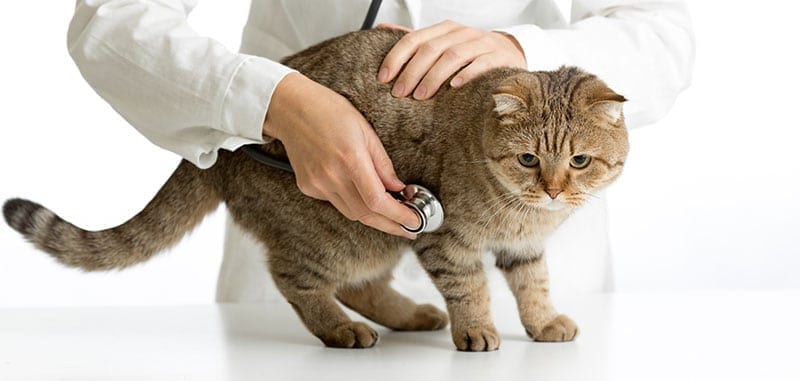I’m the first one to admit that I’m not up on pop culture. I’m not as hip as I once was, if I ever was! After 23 years as a veterinarian, it seems there isn’t enough time in the day to learn all we have to know! Medicine is advancing so quickly. So I study. A lot. And the other day I came across a startling statistic: 46% of diabetic dogs have hypertension (high blood pressure). In fact, several hormonal diseases can cause high blood pressure in pets. Of course I had to write an article about it for my loyal ADW followers!
In general vets are better about checking blood pressure than we have been in the past. Even so, I know there are a lot of veterinarians who don’t check a pet’s blood pressure unless a pet is under anesthesia. Some veterinarians are superstars and check blood pressure on all senior patients. And some vets check blood pressure for the “high risk” groups like patients with kidney disease, heart disease and liver disease. Well, we can now lump diabetics (and pets with other hormonal diseases like cushings disease or thyroid disease) into the high risk category. I read about pet diabetes all the time and was really surprised that 46% of diabetic dogs have hypertension. Be proactive. Ask your vet to check your diabetic pet’s blood pressure. And do it before the vet’s nursing staff has done anything else like taking temperatures and other such “torture”. We don’t wish to artificially elevate the blood pressure with “white coat syndrome”!
As always, step back ten feet and assess the situation. If we wish to control hypertension secondary to diabetes, it makes sense to control the underlying disease process! If you know you can do better, perhaps even feel guilty that you routinely miss doses of insulin or don’t run blood glucose curves very often or don’t follow your vet’s instructions to the T, step up your game before we reach for medications. Follow the rules your vet has set out for you. Remember in the pirate movie when the captain said the pirate code was more of a guideline than actual rules? If your diabetic pet is not controlled and has high blood pressure, veer toward the rules!
Don’t be giving Fluffy salty snacks! Most dogs and cats love salty snacks. This is no surprise as we humans enjoy our salty snacks, too. When we eat something salty, our body retains water. When we retain water we essentially have a higher blood volume. Hypertension has numerous factors and a high blood volume certainly isn’t going to help that situation.
The most common drugs your vet might use for hypertension: Ace inhibitors are usually the first med we use if a dog has high blood pressure. Ace stands for angiotensin converting enzyme. Most commonly we use Benazepril or Enalapril in dogs and cats. They have several functions. By lowering the production of the hormone aldosterone they decrease sodium retention. Like I mentioned above, sodium retention means a bigger blood volume and therefore an increase in blood pressure. Decreasing sodium retention can lower the blood pressure. Additionally, ace inhibitors cause the peripheral blood vessels to dilate which results in a lower blood pressure. They are not without side effects, however. They could drop the blood pressure too low, thereby causing kidney values to go up. Our kidneys are privileged organs that like a good blood flow! Obviously, when we use an ace inhibitor we need to monitor the blood pressure, periodically check and adjust the dosage, and monitor kidney values and serum electrolytes. Ace inhibitors can also cause lethargy and loss of appetite. If we don’t achieve success for hypertensive dogs with ace inhibitors alone, we might add in some amlodipine.
Amlodipine is typically our “go to” drug for cats with high blood pressure, although we may do combination therapy for both dogs and cats of ace inhibitors and amlodipine. Amlodipine causes the muscles around blood vessels to relax. We rarely have side effects using this drug in kitties, but it can cause lethargy and weight loss and electrolyte abnormalities. And of course we need to adjust the dose so we don’t cause hypotension which could cause an increase in the kidney values. If we don’t achieve success in hypertensive cats with amlodipine alone, we might add in an ace inhibitor.
There are several other meds available for high blood pressure, but ace inhibitors and amlodipine are the most commonly chosen meds for dogs and cats.
Have your diabetic pet’s blood pressure checked regularly! Either get a house-call vet to come check it in your home, or go to the vet during your clinic’s slowest time. (At my clinic that is usually first thing in the morning unless it’s a surgery day). We don’t want a lot of hub-bub going on. It’s bound to be increased if a dog in the lobby is yapping at your pet. As I mentioned above, check blood pressure before the doctor or vet tech does anything else. Things we view as part of a thorough physical examination might be construed by your pet as violation and torture. Try to minimize stresses that can cause white coat syndrome before we check the blood pressure.
As always, I enjoy getting emails from readers. Feel free to email me at joi.suttondvm@adwdiabetes.com
NOTE: Consult your veterinarian first to make sure my recommendations fit your pets special health needs.







Leave A Comment